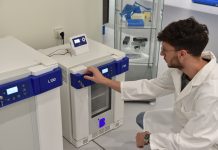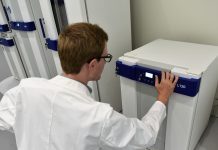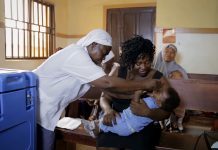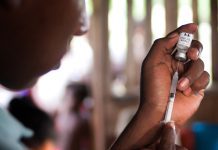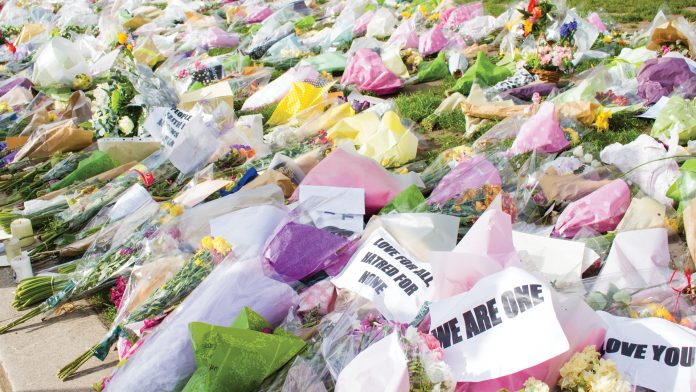
The head of KU Leuven’s Unit of Emergency Medicine, Marc Sabbe, considers the reactions of medical professionals in terror attacks
Mass casualty incidents can no longer be ignored, yet healthcare workers seldom focus on how to react during a mass casualty incident. Previously, it was mostly the risks and if they will happen that were questioned, forming the mainstream thought process and waiving the necessary attention on disaster planning and preparedness in the medical world. An increasing awareness of the risk of mass casualty incidents has shifted the process to a question of when will it happen. In addition, and as recent attacks have focused on ‘soft targets’ such as concert halls, sporting events, airports, etc. where groups of people congregate, healthcare workers have begun to realise that hospitals are also soft targets.1
Healthcare workers are particularly vulnerable as it is the aim of the terrorist to destabilise society, and governments are aware that the incapacitation or destruction of healthcare facilities is a pressing problem. Beyond physical threats, recent cyber-attacks on hospitals have resulted in unauthorised access to personal data, and have paralysed many hospitals. Such attacks have only increased the importance of crisis and disaster management strategies, which must further be introduced into the medical world – especially when the basic concepts of safety and security are insufficiently known by hospital managers or personnel.
One of the main principles of disaster management is to provide the correct and adequate proportions of the ‘4-S rule’, i.e. space, stuff, staff and structure. This article will henceforth focus on stuff, staff and structure in the medical domain.
How well prepared are physicians and nurses for such events?
If we examine the curricula of medical or nursing educational programmes throughout Europe, we will never detect a basic course on disaster medicine. However, disaster medicine could also be included in different educational parts of a curriculum as acute or emergency medicine. We tested both the knowledge and the willingness to help of final-year medical students at the four Flemish universities in different cases of mass casualty incidents,2 titling the paper ‘Belgian senior medical students and disaster medicine, a real disaster?’ From this we found that it is clear that disaster medicine is not included in general medical training; it is taught only to a small minority of emergency physicians and nurses. Luckily, some institutions have begun to incorporate it in their educational programmes, but the change is slow and insufficient.
Is much training required?
It is difficult to change the mindset of a healthcare worker from an individual ethical perspective into a collective ethical perspective. In mass casualty incidents, we do everything possible for patients but use limited resources to reduce mortality, morbidity and invalidity as much as possible. However, operational aspects can be easily and briefly trained with good results. We trained nurses working in different hospitals on how to categorise patients for evacuation;3 within an hour, the basics were explained and practised. If difficulties were observed, it was mainly due to the limited experience with the subject and the mindset-change necessary to facilitate collective ethical thinking.
How well prepared are European hospitals for mass casualty incidents?
Although many hospitals have developed policies and structures, it often remains a ‘paper plan’. If there are no trained personnel available, nor any disaster exercises organised and evaluated, it is difficult to change policies on exceptional circumstances into routine actions. In addition, the availability of necessary equipment (e.g. personal protective clothing, decontamination rooms, antidotes, antiviral drugs) in hospitals clearly is insufficient.1,5
In the case of pandemics or CBRNe incidents, there is a high level of willingness among all healthcare workers to respond, but obstacles exist that will significantly reduce the workforce during a disaster. For example, chronically high absenteeism may be crucial. Optimal equipment and accurate information on the risks are essential elements in reducing the number of absent personnel.
Emergency departments (ED) are accessible 24/7, rendering them especially vulnerable. Controlling access to the ED is essential in deterring violence or terror, but should be introduced as a daily habit in normal functioning. All these aspects and issues require hospital disaster planning and preparedness, alongside a change in safety and security culture within hospitals.
Does mass casualty preparedness require any special techniques?
Exceptional situations may need exceptional measures or therapeutic actions. A specific action in case of a mass casualty incident is creating housing and/or therapeutic capacity (surge capacity). Part of this involves creating available beds in a hospital, yet modern hospitals are becoming more and more managed on economic principles wherein bed availability is planned to be optimal in order to ‘produce’ as much as possible, resulting in a limited number of empty beds. A mass casualty incident is unplanned and may require a large number of available beds.
As triage is well-known as a tool in medical disaster and emergency medicine, reverse triage is an upcoming technique designed to rapidly create in-patient bed capacity by identifying hospitalised patients who do not require major medical assistance for at least 96 hours, and who only have a limited risk of serious complications resulting from early discharge6 (20% of these is considered to be reasonable, but takes time to find such patients).
A specific electronic medical records software to identify the patients that cannot be discharged may help to minimise those to be evaluated for reverse triage, and the initial results of a pilot study are promising.7
Concerning special therapeutic techniques, recent attacks have demonstrated that civilian doctors are less prepared than military doctors to initially evaluate and treat blast or penetrating injuries.
Conclusions
Despite the increasing awareness of a lack of preparedness and the governmental instructions to make changes, there is still much work ahead of us to be thoroughly prepared. Following recent terrorist attacks, such as those in Manchester, UK, or Barcelona, Spain, much effort went towards basic safety and security measures. The initial efforts focused on reinforcing the police and on security, but we must not forget that hospitals are the ideal soft targets of terrorists. Our efforts should not therefore stop with increasing public security, but should extend to increasing (patient) safety.
There are improvements in pre-hospital team performances at the scene of the incident, yet hospital disaster preparedness is, in contrast, limited all over Europe. Using the principles of space, stuff, staff and structure – translated mainly through training – appropriate equipment and exercises will significantly improve hospital disaster preparedness. Unfortunately, there is still a long way to go as hospital profitability does not increase by investing in these aspects, but growing numbers of healthcare workers are beginning to understand the importance of them.
References
- De Cauwer H, Somville F, Sabbe M and Mortelmans LJ. Hospitals: Soft Target for Terrorism? Prehospital and Disaster Medicine Journal 32(1): 94-100, 2017
- Mortelmans LJM, Dieltiens G, Anseeuw K and Sabbe M. Belgian senior medical students and disaster medicine, a real disaster? European Journal of Emergency Medicine 21(1): 77-78, 2014
- Hendrickx C and Sabbe M. Training nurses in evacuation categorisation in a teaching and non-teaching hospital, differences? 11th EuSEM congress, Athens, 23-27 September 2017
- Hendrickx C, D’Hoker S, Michiels G and Sabbe M. Principles of hospital disaster management: an integrated and multidisciplinary approach. B-ENT. 12 (suppl 26/2): 139-148, 2016
- Mortelmans LJM, Van Boxstael S, De Cauwer H and Sabbe M. Preparedness of Belgian civil hospitals for chemical, biological, radiation and nuclear (CBRN) incidents: are we there yet? European Journal of Emergency Medicine 21(4): 296-300, 2014
- Pollaris G and Sabbe MB. Reverse triage, more than just another method. European Journal of Emergency Medicine 23(4): 240-247, 2016
- Pollaris G, Noté S, Desruelles D and Sabbe M. Novel IT application for reverse triage selection: a pilot study. Journal of Disaster Medicine and Public Health Preparedness. Accepted


